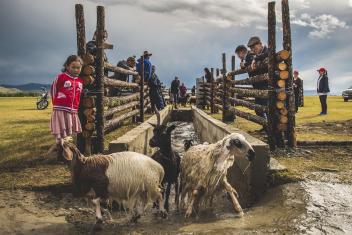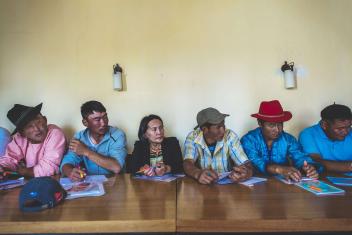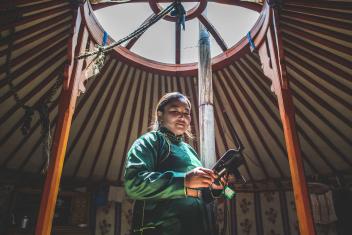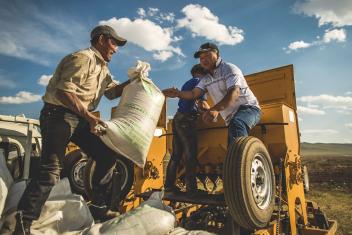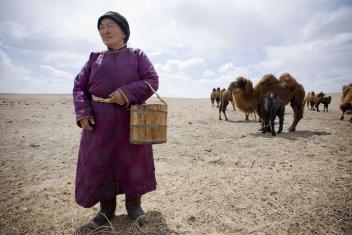Celebrating the legacy of Mercy Corps Mongolia
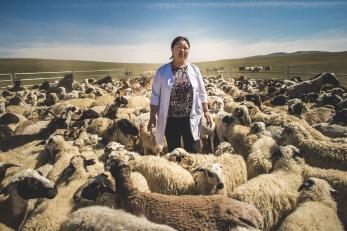
In 1999, when Mercy Corps arrived in Mongolia, my country was still reeling and rebuilding from one of the most devastating economic declines in Mongolia’s history. We had transitioned to a democracy from a socialist state, opening up and taking part in the global free market economy. There were growing pains but soon thousands of Mongolians saw an opportunity by starting their own businesses. New shops and restaurants began to sprout along the streets of our capital city, Ulaanbaatar. While entrepreneurs in the largest city saw success, the vast majority of rural Mongolians whose livelihoods relied on agriculture and raising livestock were at risk of being left behind in the new economy. Mercy Corps Mongolia was established to help rural communities thrive during this transformational time in our country.
My introduction to Mercy Corps was when I stepped into their Ulaanbaatar office in August 1999. I distinctly remember the aroma of coffee, since it was an uncommon drink in Mongolia at the time, when I arrived to interview for a temporary gig as a translator. Back then, it was incomprehensible to think I would stay on with Mercy Corps Mongolia for more than two decades—all the way until the programme sunsets at the end of this month.
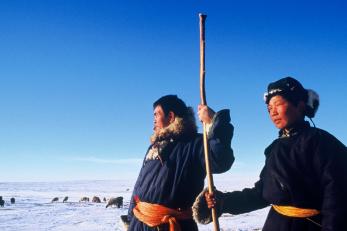
After my initial part-time job as a translator, I was hired on as part of Mercy Corps Mongolia’s first programme called the Gobi Initiative. As a city boy who had been born and raised in Ulaanbaatar, my time on the team brought me across the country to work alongside Mongolians who relied on the land to make a living. During the early years of the Gobi Initiative, I worked on the Gobi Business News magazine where we compiled and shared information with rural herders who needed access to timely, accurate weather forecasts, policy news, and national business information like the going rate for their livestock and goods.

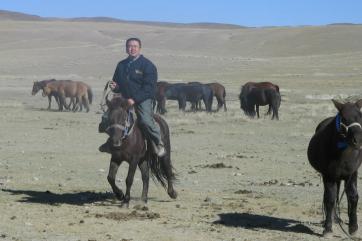
We drove through bumpy dirt roads to reach remote grasslands to learn more about how to support traditional nomadic farmers. They faced challenges stemming from loose social networks, inaccessible social services, severe weather and shrinking pastureland that threatened their livelihoods. In 1999-2001, herders lost about 30% of their livestock due to dzuds, a natural disaster unique to Mongolia. Dzuds bring on severe winter conditions and droughts across our landscape that makes it impossible for livestock to graze.
In a country where about a quarter of our population are made up of rural herders, it has always been imperative to prioritise their needs. Mercy Corps partnered with local governments and organisations to connect all aimags (similar to province) with maps showing open land for foraging in a Livestock Early Warning System (LEWS) programme in 2009. As technology evolved, we collaborated with the National Emergency Management Agency (NEMA) to create an SMS system to connect herders with real-time information. By 2017, more than 50,000 herders were just a text away from reliable weather and pasture information. LEWS and the SMS system are just a couple examples of how we improved coordination between rural communities and local governments.
My job titles and duties had evolved and changed over the years. I wrote reports, supervised staff in rural areas, and gathered data. Our staff supported more than 40 programmes over two decades, training and reaching more than 147,000 herders, farmers, veterinarians, government representatives, and businesses. One of my favourite Mercy Corps programmes was the Goviin Ekhel, a microfinance institution that helped rural businesses get loans to startup and expand. From 2000 to 2002, Goviin Ekhel issued 300 loans valued at almost $1 million USD and received a nearly 100% repayment rate.
The success of the microfinance programme proved there was a need nationwide and Mercy Corps co-founded XacBank with the United Nations Development Programme (UNDP) in 2001. Though Mercy Corps sold its shares of XacBank in 2015, reinvesting proceeds into programmes supporting rural communities, XacBank continues to operate as the second largest bank in Mongolia and is the country’s largest microfinance institution.
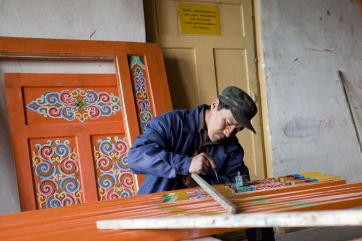

When I think about how much has changed in Mongolia during my time with Mercy Corps, I recall how there used to be only two people who owned cars in my entire city block in Ulaanbaatar in the 1980’s and now two-hour traffic jams are common. One of our favourite jokes to tell is about a man sitting in his car at a traffic light and spots a friend waiting at the crosswalk. He asks the friend where she’s heading and offers her a ride. The friend considers for a moment before replying, “No, thanks. I’m in a hurry. I better walk.”
It has been 22 years of changing, growing, and learning. I learned how to spot the best cashmere among a flock of goats. I learned about the diverse landscapes across my country. I learned that hardships may visit us but we can work together to find solutions. Mercy Corps Mongolia’s programmes aided economic development, reduced disaster risk, and supported local governments to be responsive to the needs of rural Mongolians. The conclusion of the programme is a natural part of development work—rural markets are thriving and the government has created sustainable programmes and policies that will ensure growth for many more decades to come. The sunsetting of the programme is bittersweet but I welcome the next chapter in the story of Mongolia.

